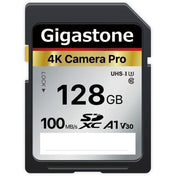In the vibrant world of photography, having an eye-catching portfolio is essential for showcasing your talents and attracting potential clients. Whether you’re a seasoned professional or an emerging talent, your portfolio is your visual resume. In this guide, we'll explore how to create a photography portfolio that stands out from the crowd, including tips on presentation, content curation, and optimizing your portfolio for online platforms like Shopify. Let’s dive in!
Understanding the Importance of Your Portfolio
Your photography portfolio serves as a first impression for clients, no matter whether it’s in-person or online. A well-crafted portfolio highlights your unique style, technical abilities, and the depth of your experience. Here are some points to underscore its importance:
- Showcases Your Best Work: This is where you display your most captivating images.
- Reflects Your Personal Style: Your portfolio should communicate your distinctive vision and approach.
- Attracts Your Ideal Clients: A tailored portfolio can draw in clients aligned with your artistic goals.
Choosing the Right Format
When it comes to creating your photography portfolio, the presentation format plays a crucial role. Photography portfolios can be physical, online, or a blend of both. Here, we’ll explore the strengths of various formats:
Physical Portfolios
Physical portfolios, often presented in high-quality printed formats, allow potential clients to experience your work up close. Consider these elements when designing your physical portfolio:
- Quality Prints: Use high-quality paper and professional printing services.
- Consider Size: Make sure it’s portable but substantial enough to make an impact.
- Carefully Curated: Include a diverse selection of your best work while maintaining a cohesive style.
- Professional Presentation: A sturdy and attractive binder or case enhances your portfolio’s appeal.
Online Portfolios
In today’s digital age, an online portfolio is essential for reaching a broader audience. Here are some steps to create a compelling online version:
- User-Friendly Design: Use a clean, simple layout that emphasizes your photography.
- Mobile Optimization: Ensure that your site looks great and functions well on all devices.
- Use SEO Best Practices: Optimize your images and text to improve visibility in search engines.
- Engagement Opportunities: Allow visitors to contact you easily or connect on social media.
Curation is Key
When it comes to curating content for your photography portfolio, quality should always take precedence over quantity. Too many images can dilute the impact of your work. Here’s how to select the best pieces:
Highlight Signature Styles
Include images showcasing your unique style. If you specialize in landscapes with dramatic contrasts or intimate portraits, demonstrate this clearly. A standout portfolio often revolves around a consistent theme or aesthetic.
Vary Your Content
In British professor Nicholas Rose’s words, "you cannot disclose unnecessarily." This adage rings true in photography as well. Therefore, ensure diverse content representing your versatility—such as:
- Portraits
- Event Photography
- Commercial Shoots
- Landscapes
- Documentary Series
Pair images with insightful captions or descriptions that provide context and highlight your creative process.
Creating Wow Factor With Image Quality
The quality of your images is not just about the right equipment but also about how you present them. To make your portfolio compelling, consider investing in high-quality lenses, like the FujiFilm XF 16mm f/1.4 R WR lens. This lens is known for its sharpness and beautiful bokeh, making it perfect for a variety of photography styles. Here are tips on image quality:
Use High-Resolution Images
Always upload high-resolution photographs to ensure clarity and vibrancy, especially in an online portfolio. Your images should load quickly, but they also need to have enough detail that will resonate with potential clients.
Optimize for Web
While high-resolution images are necessary, remember to optimize them for web browsing. Use formats like JPEG or PNG, adjust the size without losing quality, and ensure fast loading speeds.
Crafting a Narrative
A great photography portfolio should tell a story. Each image should fit together, creating a flow that guides the viewer through your work. Consider the following:
Use Thematic Series
Group images around themes or projects. This not only makes the portfolio more cohesive but also adds narrative depth. For instance, if you’re a travel photographer, consider showing a journey through various landscapes and cultures in a sequential format.
Writing Engaging Descriptions
While images speak louder than words, thoughtful descriptions add crucial information. Set the scene, include technical details when applicable, and share the story behind each shot to engage your audience.
Incorporating Client Testimonials
Online platforms like Shopify offer the perfect space for displaying client testimonials. Real feedback reinforces your credibility and can convince potential clients to reach out. Consider adding a dedicated section or page in your portfolio for these endorsements. Here are some tips:
- Authenticity: Use genuine client quotes to enhance trust.
- Variety: Include feedback from various types of clients—individuals, businesses, or organizations.
- Visual Appeal: Pair testimonials with images from the projects referenced.
Staying Current and Relevant
The world of photography is always evolving, and so should your portfolio. Regularly update your work to include recent projects, ensuring you always represent your current style and best work. Here are ways to keep your portfolio fresh:
Follow Trends in Photography
Staying on top of emerging trends is vital. Analyze what styles, techniques, and themes are gaining popularity, and incorporate elements that resonate with you.
New Projects and Experiments
Don’t hesitate to experiment with new techniques or themes. This not only allows you to grow as an artist but also attracts clients looking for innovation and creativity.
Boosting Your Portfolio Visibility
Creating a stunning photography portfolio is just the beginning; you must also drive traffic to it. Here are several proven strategies to enhance your visibility.
Leverage Social Media
Platforms such as Instagram, Facebook, and Pinterest offer a significant opportunity to showcase your images. Share snippets from your portfolio, engage with your audience, and link back to your Shopify site.
Optimize for Search Engines
Using SEO strategies is crucial. Ensure that your online portfolio uses relevant keywords, like FujiFilm XF 16mm f/1.4 R WR lens, throughout your website. This will help improve your rankings in search results.
Collaborate with Other Creatives
Networking is essential in creative fields. Collaborate with other photographers, artists, or brands to expand your reach and grow your audience through shared exposure.
Get Feedback and Iterate
Creating a standout photography portfolio does not happen overnight. Seek feedback from peers and mentors on your portfolio and be willing to make adjustments. Here’s how to approach feedback:
- Ask Specific Questions: Request input on both the images and the layout of your portfolio.
- Set a Timeline: Regularly revisit your portfolio after getting feedback to measure your growth.
- Stay Open: Accept all feedback constructively, viewing it as an opportunity for growth.
An Ongoing Journey
Your photography portfolio is a living document, ever-evolving as you progress in your craft. Embrace the journey of continually refining and showcasing your art. With dedication to quality, a unique visual narrative, and active engagement, you'll build a portfolio that not only stands out but also makes an impression on every viewer.
So, what are you waiting for? Get out there, pick up your camera, and start crafting the stunning portfolio you’ve always envisioned—because the world is waiting to see your unique perspective!











